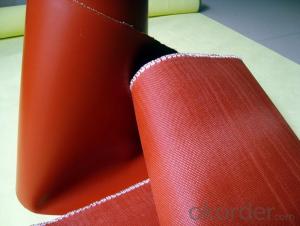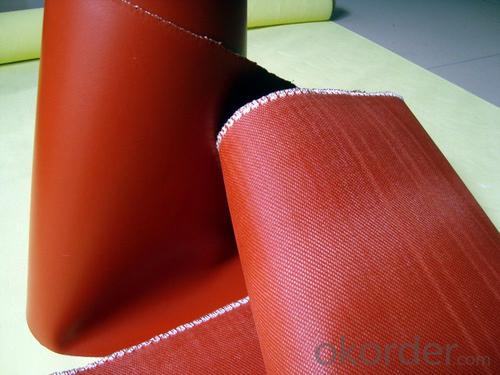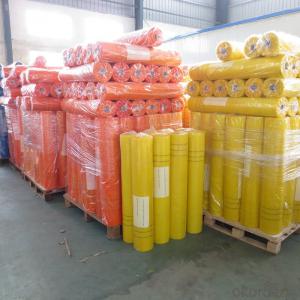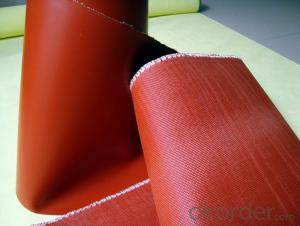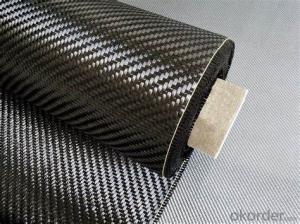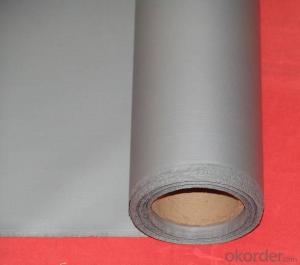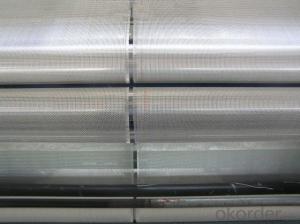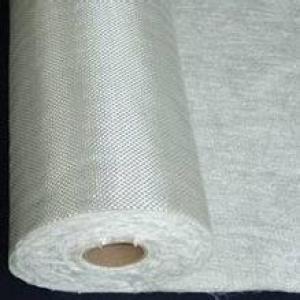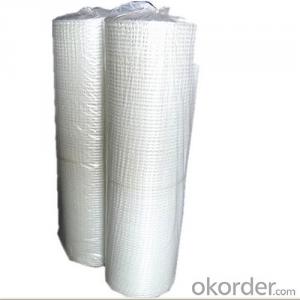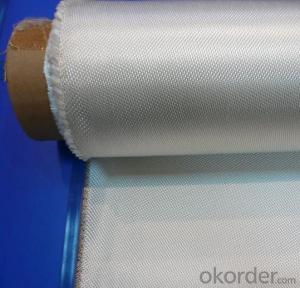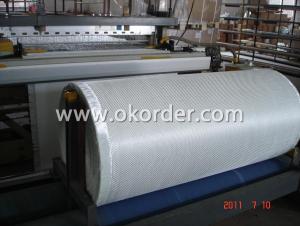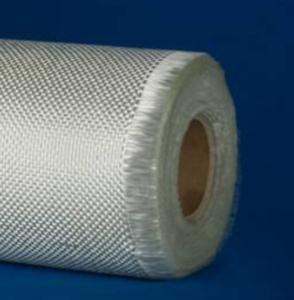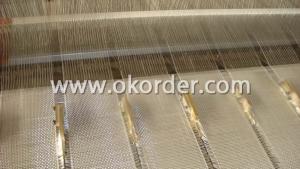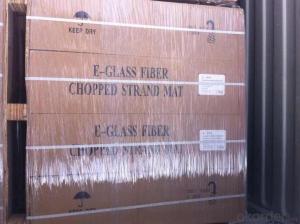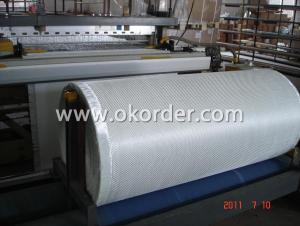Rubber Coated Fiberglass Fabric for Machinery Use
- Loading Port:
- Shanghai
- Payment Terms:
- TT OR LC
- Min Order Qty:
- 500 m²
- Supply Capability:
- 50000 m²/month
OKorder Service Pledge
OKorder Financial Service
You Might Also Like
Coated Fiberglass Fabric for Machinery Use
Fiberglass Fabric Description
Silicone coated fiberglass fabric is a fiberglass cloth, which possesses the properties of temperature resistance, anti-corrosion, high strength and is coated with organic silicone rubber.
Fiberglass Fabric Specification
Thickness:0.2mm-5mm
Width:100cm-150cm
Color;grey/red/silver/black
Weight(coating):130gsm-2800gsm
Model No | FSD2030 | FSD2030 | FSD2050 | FSD2100 | |
High temperature resistant(°C) | ≤280 | ≤280 | ≤280 | ≤280 | |
Low temperature resistant(°C) | ≥-40 | ≥-40 | ≥-40 | ≥-40 | |
Tensile intensity (N/50mm) | Warp | ≥1750 | ≥1750 | ≥2500 | ≥3500 |
Weft | ≥1280 | ≥1280 | ≥2100 | ≥3000 | |
Inflating burst intensity(Mpa) | ≥2.0 | ≥2.0 | ≥2.2 | ≥2.6 | |
Peeling intensity(N/m) | ≥450 | ≥450 | ≥520 | ≥600 | |
Insulation (kv/mm) | 16 | 16 | 18 | 18 | |
Weight (g/m*m) | 550-650 | 550-650 | 750-800 | 1500-1800 | |
Width(mm) | 1000±20 | 1000±20 | 1000±20 | 1000±20 | |
Thickness(mm) | 0.3-0.4 | 0.3-0.4 | 0.05-0.55 | 1.0-1.1 | |
color | Silver-gray, gray, red | lucency | Silver-gray, gray, red | Black, gray, red | |
Fiberglass Fabric Features:
1, Good performance on resisting high temperature and low temperature, -40°C-280°C;
2, High strength;
3, Ozone, oxide, light and weather aging resistance;
4, High insulation: dielectric constant:3-3.2, breakdown voltage: 20-50KV/MM;
5, Chemical corrosion resistant, oil-proofing, waterproofing (washable)
Fiberglass Fabric Application:
It has been widely used in construction, electric insulation,
chemical industry, pipeline ductile conjunction, large generating
Corrosion proofing field, machinery, metallurgy, sealing and so on.
Product Show
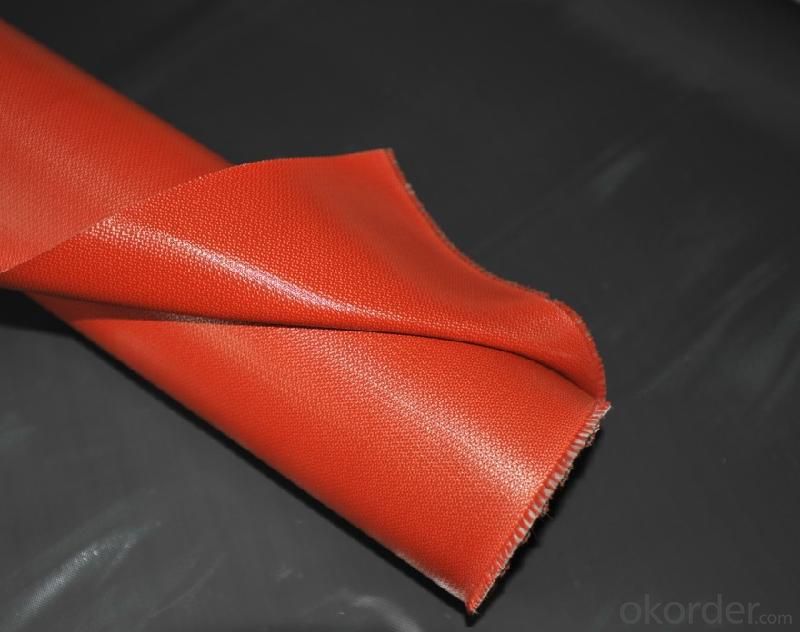
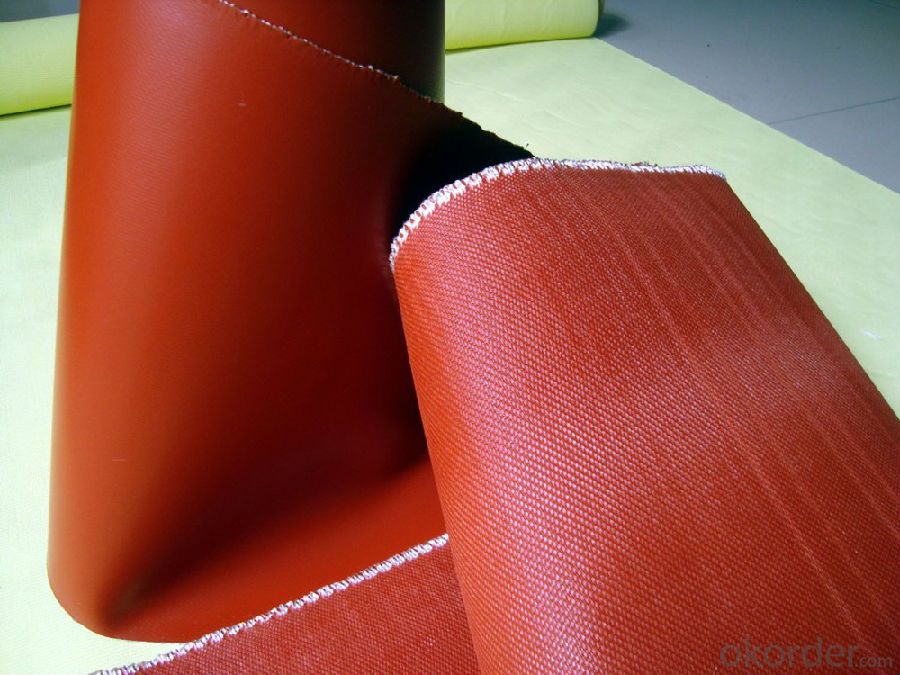
FAQ
1.What are the characteristics of fiberglass fabric?
a)Outstanding temperature resistance(from -70°C to +260°C)
b)Excellent chemical resistance
c)Superior non-stick surface, easy to clean
d)High dielectric strength
e)Dimensional stability
f)Resistance to UV, IR and HF
g)Non-toxic
2.How many methods to weave the fabric?
Four methods to weave the fabric:
a).Plain weave: it can be used in electricity insulation materials and reinforced materials in industry, because of inseparable structure, plain and clear lines.
b).Twill weave: compared with plain weave, it is of high density, high intensity, with a soft and loose structural weave. It can be used in ordinary reinforced materials, filter materials, and painting cloth.
c) Satin weave: compared with plain weave and twill weave, it is of high density,high intensity, with a soft and loose structural weave with a good texture. It is applicable for use as a higher reinforced material in machinery.
d).Gauze weave: said lattice twist weave. It can be used in spread model curtain,resin reinforced emery wheel gray cloth and lattice embed belt.
3.Can you offer us some samples?
We are willing to offer our customers best product&service,if it's necessary we can send
you sample for test;also we welcome all you customer have a trial order.
- Q: How is fiberglass fabric repaired?
- Fiberglass fabric can be repaired using a few different methods, depending on the extent of the damage. One common method is using epoxy resin and a fiberglass repair kit. First, the damaged area is cleaned and sanded to remove any loose fibers or debris. Then, a piece of fiberglass fabric is cut to size and placed over the damaged area. Epoxy resin is applied to both the fabric and the damaged area, and then the fabric is laid over the damaged area and pressed down to ensure a good bond. Excess resin is removed, and the repair is left to cure according to the instructions on the resin kit. Another method of repairing fiberglass fabric is using a heat gun. This is typically used for minor repairs such as small holes or tears. The heat gun is used to warm up the damaged area, which softens the fiberglass fabric and allows it to be stretched and smoothed out. Once the fabric is smooth and in place, it can be secured using a suitable adhesive or epoxy resin. For larger or more complex repairs, it may be necessary to seek professional help or consult the manufacturer's guidelines. It's important to follow proper repair procedures to ensure a strong and durable repair.
- Q: How is fiberglass fabric used in the marine industry?
- Due to its unique properties and versatility, fiberglass fabric finds extensive use in the marine industry. Boat building and repair are its primary applications, providing exceptional strength, durability, and corrosion resistance. For boat construction, fiberglass fabric is utilized to form the hull, deck, and other structural components. It is typically combined with resin to create a lightweight yet incredibly strong composite material. The fabric is layered, impregnated with resin, and then cured to establish a rigid and robust structure. One of the key advantages of fiberglass fabric lies in its ability to withstand the harsh marine environment. It boasts high resistance to water, chemicals, and UV radiation, making it perfect for boats constantly exposed to saltwater and sunlight. This resistance significantly reduces maintenance and repair costs associated with marine vessels. Fiberglass fabric also serves in the restoration and repair of boats. It can be applied to damaged areas, reinforcing the structure and restoring the vessel's integrity. The fabric can be easily molded and shaped to fit the boat's specific contours, ensuring a seamless repair. Furthermore, fiberglass fabric plays a role in the production of marine accessories and equipment. Its lightweight nature and resistance to moisture and corrosion make it a common choice for manufacturing boat seats, storage compartments, and panels. In summary, fiberglass fabric holds great importance in the marine industry. Its strength, durability, and resistance to the marine environment make it an ideal material for boat construction, repair, and various marine applications.
- Q: How is fiberglass fabric used in the filtration industry?
- Fiberglass fabric is widely used in the filtration industry due to its excellent properties and versatility. It is commonly employed in various filtration applications such as air filters, liquid filters, dust collectors, and industrial filtration systems. One of the key advantages of fiberglass fabric in filtration is its high strength and durability. The fabric is made by weaving fine strands of glass fibers together, creating a strong and resilient material that can withstand harsh filtration conditions. This makes it suitable for both high-pressure and high-temperature filtration processes. Furthermore, fiberglass fabric has excellent chemical resistance, making it ideal for filtering corrosive substances or liquids. It is resistant to a wide range of chemicals, solvents, and acids, ensuring that the filtration material does not degrade or react with the filtrate. Another crucial attribute of fiberglass fabric is its high porosity and filtration efficiency. The fabric can be engineered to have specific pore sizes, allowing for the effective removal of different particle sizes and contaminants. It provides a reliable barrier, preventing the passage of undesired particles while allowing the desired filtrate to pass through. Additionally, fiberglass fabric is known for its low resistance to airflow, making it an excellent choice for air filtration applications. It enables efficient air circulation by allowing the passage of clean air while capturing and retaining airborne particles such as dust, pollen, and allergens. Moreover, fiberglass fabric is easy to maintain and clean, increasing its lifespan and efficiency. It can be easily cleaned through various methods such as backwashing, reverse air cleaning, or chemical cleaning, ensuring that it remains effective over time. In summary, fiberglass fabric is a valuable component in the filtration industry due to its strength, durability, chemical resistance, porosity, and filtration efficiency. Its use in air filters, liquid filters, dust collectors, and industrial filtration systems helps to maintain clean and pure environments by effectively removing particles and contaminants.
- Q: Can fiberglass fabric be laminated with other materials?
- Yes, fiberglass fabric can be laminated with other materials. Lamination involves bonding or layering different materials together, and fiberglass fabric is often used as a reinforcing layer in composite laminates. It can be combined with various materials such as resins, foams, or metals to enhance strength, durability, or other desired properties in the final product.
- Q: What's the difference between glass fiber tape and fiberglass tape?
- Glass fiber belt is the base material, glass fiber cloth, without glue. Fiberglass is glass fiber. Glass fiber tape is called fiberglass cloth tape, a glass fiber tape, with aluminum film outside
- Q: Can fiberglass fabrics be used for insulation in electrical systems?
- Yes, fiberglass fabrics can be used for insulation in electrical systems. Fiberglass is a commonly used material for insulation due to its excellent thermal and electrical insulation properties. It is a non-conductive material, meaning it does not conduct electricity, which makes it ideal for use in electrical systems where insulation is required to prevent electrical current leakage or short circuits. Additionally, fiberglass fabrics have high temperature resistance, making them suitable for applications in electrical systems that generate heat. The fabric form of fiberglass allows for easy installation and wrapping around electrical components, providing a protective barrier against electrical shocks and preventing heat transfer. Overall, fiberglass fabrics are a reliable and effective choice for insulation in electrical systems.
- Q: How does fiberglass fabric handle vibration?
- Fiberglass fabric is known for its excellent resistance to vibration. It has inherent damping properties that help absorb and dissipate vibrations, making it a suitable material for applications that require vibration control and reduction. The flexible and resilient nature of fiberglass fabric allows it to withstand and mitigate the effects of vibration, ensuring durability and stability in various industries such as aerospace, automotive, and construction.
- Q: Is fiberglass fabric resistant to salt spray in coastal areas?
- Indeed, in coastal areas, fiberglass fabric demonstrates resistance to salt spray. Renowned for its corrosion resistance and durability, fiberglass proves to be an exceptional option for marine-related purposes. Over time, salt spray, comprising corrosive salt particles, can inflict harm upon numerous materials. Nevertheless, fiberglass fabric is specifically engineered to endure the unforgiving conditions prevalent in coastal regions, including exposure to salt spray. It neither corrodes nor deteriorates when subjected to saltwater, rendering it an optimal selection for diverse marine applications like boat covers, sails, and awnings.
- Q: Can fiberglass fabric be used for reinforcement in chemical processing tanks?
- Yes, fiberglass fabric can be used for reinforcement in chemical processing tanks. Fiberglass fabric is known for its excellent chemical resistance, making it an ideal choice for applications in which the tank is exposed to a wide range of corrosive chemicals. It is also lightweight and has high strength, which helps in reinforcing the tank structure and improving its durability. Additionally, fiberglass fabric can be easily molded and shaped to fit the tank's specific design requirements, making it a versatile material for reinforcement in chemical processing tanks.
- Q: How does fiberglass fabric perform in high-vibration environments?
- Fiberglass fabric performs exceptionally well in high-vibration environments. Its inherent strength and durability make it resistant to the effects of vibrations, reducing the risk of damage or failure. Additionally, its flexibility allows it to absorb and dissipate vibrations, thereby minimizing the transmission of vibrations to surrounding structures. Overall, fiberglass fabric is an excellent choice for applications where high vibrations are present.
Send your message to us
Rubber Coated Fiberglass Fabric for Machinery Use
- Loading Port:
- Shanghai
- Payment Terms:
- TT OR LC
- Min Order Qty:
- 500 m²
- Supply Capability:
- 50000 m²/month
OKorder Service Pledge
OKorder Financial Service
Similar products
Hot products
Hot Searches
Related keywords
